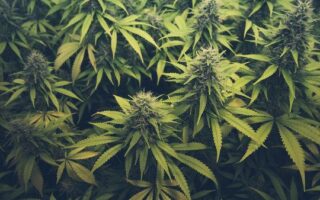Is Weed a Herb? Unpacking the Green Enigma
In the vast and intricate tapestry of the botanical world, few plants spark as much curiosity and debate as cannabis. Often shrouded in cultural stigma and legal complexities, this green enigma beckons us to delve deeper into its classification and characteristics. At the heart of the discussion lies a seemingly straightforward question: is weed a herb? While “herb” might conjure images of aromatic seasonings like basil or thyme, the definition here is layered, intertwining science, tradition, and contemporary usage. Join us as we explore the verdant territory of cannabis, peeling back the leaves to reveal its true nature and place among the myriad plants that grace our gardens and kitchens.
Table of Contents
- Exploring the Botanical Classification of Cannabis
- The Culinary and Medicinal Uses of Cannabis as a Herb
- Societal Perceptions: From Stigma to Acceptance in Herbal Medicine
- Guidelines for Responsible and Informed Use of Cannabis Products
- Q&A
- Future Outlook
Exploring the Botanical Classification of Cannabis
Cannabis, commonly known as weed, belongs to the family Cannabaceae and is classified under the genus Cannabis. This classification places it alongside other plants that share similar characteristics and characteristics. While most people think of cannabis as just a recreational substance, its botanical roots reveal it as a complex organism with diverse species, primarily Cannabis sativa, Cannabis indica, and Cannabis ruderalis. Each of these species exhibits unique traits in terms of growth patterns, cannabinoid profiles, and chemical compositions, contributing to their varied uses in medicine, recreation, and industrial applications.
The classification of cannabis also extends to its morphological and chemical characteristics, which can be summarized through a few key points:
- Leaf Structure: Cannabis plants feature serrated leaves, with varying shapes and sizes depending on the species.
- Flowering: Cannabis is dioecious, meaning it has separate male and female plants, each playing a distinct role in reproduction.
- Cannabinoids: Different species produce varying concentrations of compounds like THC (tetrahydrocannabinol) and CBD (cannabidiol), which are responsible for the therapeutic benefits and psychoactive effects.
| Species | Characteristics | Common Uses |
|---|---|---|
| Cannabis sativa | Tall, thin leaves; energizing effects | Recreational, medicinal |
| Cannabis indica | Short, broad leaves; relaxing effects | Sedative, pain relief |
| Cannabis ruderalis | Dwarf size; autoflowering | Hybrid breeding, low THC |
The Culinary and Medicinal Uses of Cannabis as a Herb
Cannabis, revered for its versatile applications, transcends the boundaries of recreational use to unveil a rich tapestry of culinary possibilities. Chefs and home cooks alike have begun to incorporate this herb into their dishes, enhancing flavors while imparting its unique benefits. From infused oils and butters to seasonings, cannabis can elevate meals to new heights. Popular culinary uses include:
- Edibles: Brownies, gummies, and chocolates that deliver a sweet boost.
- Savory Dishes: Incorporating infused oils in pasta or salad dressings for a distinct flavor profile.
- Herb Blends: Mixing dried cannabis flowers with spices for seasoning meats and vegetables.
Beyond its culinary delights, cannabis has been heralded for its medicinal properties, offering a natural remedy for various ailments. The therapeutic compounds, notably cannabinoids like THC and CBD, have garnered attention for their potential in managing pain, reducing inflammation, and alleviating anxiety. Patients seek cannabis for:
- Pain Relief: Effective in chronic conditions such as arthritis and migraines.
- Stress & Anxiety Management: Many report feelings of calmness and relaxation.
- Appetite Stimulation: Particularly beneficial for patients undergoing treatments that suppress appetite.
| Culinary Uses | Medicinal Uses |
|---|---|
| Edibles like cookies and gummies | Pain management through various forms |
| Infused cooking oils | Anxiety relief, promoting relaxation |
| Herbal seasoning blends | Enhancing appetite in chemotherapy patients |
Societal Perceptions: From Stigma to Acceptance in Herbal Medicine
Historically, herbal medicine has been veiled in stigma, often associated with counterculture and the illegal drug trade. Society’s perceptions were largely shaped by a fear of the unknown and a lack of understanding regarding the benefits of herbs, including cannabis. As knowledge about the medicinal properties of plants has expanded, the narrative is shifting. More people are beginning to recognize the therapeutic potential of herbal remedies, facilitated by formal research and the voices of advocates in the health community. This gradual acceptance is fostering an environment where conversations about herbal medicine can occur without the shadows of judgment.
The internet and social media have played pivotal roles in transforming societal views on herbal medicine, making information more accessible and encouraging open dialogue. This change has led to a clearer distinction between the medicinal uses of herbs and their recreational counterparts. A few key factors contributing to this evolution include:
- Increased access to research supporting the efficacy of medicinal herbs
- Growing acceptance of cannabis in various legal frameworks
- A rise in holistic health approaches emphasizing the importance of natural remedies
As the stigma surrounding herbal medicine diminishes, it is essential to sustain the momentum and ensure that education and awareness continue to progress. Combining tradition with modern science can enrich our understanding and appreciation for these natural solutions.
Guidelines for Responsible and Informed Use of Cannabis Products
As cannabis products become increasingly accessible, it’s essential to approach their use with awareness and care. Begin by understanding the legal status of cannabis in your region, as laws can significantly vary. Prioritize your health and well-being by considering the following guidelines:
- Know Your Sources: Purchase products from reputable vendors who prioritize quality and transparency. Always look for third-party lab tests to confirm the product’s potency and purity.
- Start Low and Go Slow: Especially for new users, starting with low doses can help understand how your body reacts to different strains and forms of cannabis.
- Educate Yourself: Familiarize yourself with the different cannabinoids (like THC and CBD), their effects, and how they interact with your body.
- Mind Your Environment: Use cannabis in safe, comfortable settings, particularly if you are trying it for the first time.
Additionally, it’s crucial to respect the choices of others regarding cannabis consumption. Engaging in responsible discussions can foster a better understanding of the herb’s benefits and limitations. Consider these aspects:
| Best Practices | Considerations |
|---|---|
| Control Variables | Be aware of what influences your experience (e.g., time of day, setting). |
| Know Your Limits | Understand your tolerance and personal limits to prevent adverse effects. |
| Communicate Openly | Discuss cannabis use with friends and family, especially if sharing products. |
Q&A
Q&A: Is Weed a Herb? Unraveling the Green Mystery
Q1: What defines a “herb” in the botanical sense?
A1: In the world of botany, a herb is generally defined as a plant that is valued for its flavor, fragrance, or medicinal properties. Herbs typically have a non-woody stem and are often used in cooking or traditional medicine. This classification can make the term “herb” a bit slippery, as it may vary depending on cultural context.
Q2: So, where does cannabis fit into this definition?
A2: Cannabis, the plant from which marijuana is derived, does possess qualities that align with the definition of a herb. It has a non-woody stem (though it can become woody if allowed to grow undisturbed), and its leaves and flowers are often used for flavoring, medicinal purposes, or recreational use. Therefore, many people do refer to cannabis as an herb.
Q3: Are there different types of cannabis?
A3: Absolutely! Cannabis is generally categorized into three primary strains: Cannabis sativa, Cannabis indica, and Cannabis ruderalis. Each has distinct properties, effects, and uses. While they all belong to the same family, their growth habits and effects on users can vary significantly—some prefer them for relaxation while others may choose them for energy or creativity.
Q4: Why does the term “weed” sometimes feel pejorative when discussing cannabis?
A4: The term “weed” often carries negative connotations, primarily due to societal stigma and its association with illegal use in many regions. However, it’s important to remember that, in botanical terms, “weed” simply refers to any plant that grows in an unwanted location, regardless of its usefulness. Therefore, while cannabis can be a beneficial herb, it’s often labeled as a weed due to its hearty nature and ability to thrive in various environments.
Q5: Can cannabis be used as a culinary herb?
A5: Yes, cannabis can indeed be used as a culinary herb! While it’s more commonly known for its psychoactive properties, its leaves can be incorporated into dishes or used to create oils, butters, and infusions. Some chefs are even experimenting with cannabis in high-end cuisine, showcasing its potential as a flavorful herb.
Q6: What about the medicinal properties of cannabis?
A6: Cannabis has been studied for its various medicinal properties, including pain relief, anti-inflammatory effects, and appetite stimulation, among others. Many medicinal users advocate for its benefits, giving it a rightful seat at the table in discussions about herbal medicine. As research grows, so too does the acceptance of cannabis as a legitimate herbal remedy.
Q7: can we definitively say weed is a herb?
A7: Yes, we can! Given its botanical characteristics and traditional uses, cannabis fits within the broader definition of an herb. Whether viewed through the lens of culinary delights or therapeutic benefits, cannabis undoubtedly holds a unique and valuable place in the world of herbs. So next time someone asks, “Is weed a herb?” you can confidently weigh in and share the green truths!
Future Outlook
the question of whether weed is a herb intertwines botanical definitions with cultural perceptions, revealing the complexity of both the plant and its relationship with humanity. From its historical use in traditional medicine to its controversial status in modern society, cannabis may be classified as a herb in terms of its taxonomy and uses, yet its implications stretch far beyond simple categorizations. As we continue to explore the multifaceted nature of this plant, it encourages us to examine not only the science behind it but also the societal narratives that shape our understanding. Whether viewed through the lens of gardening enthusiasts or regulatory frameworks, the journey of cannabis remains a vibrant tapestry woven with history, science, and cultural significance. Ultimately, the conversation surrounding weed as a herb invites us to broaden our perspectives and consider the evolving story of this resilient plant as it finds its place in our lives and the natural world.


